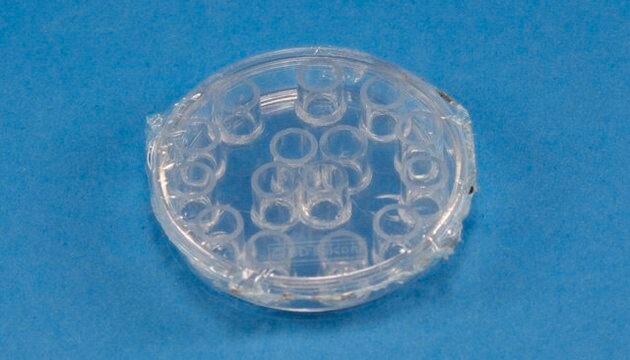C1832
Cyclosporin A
BioReagent, from Tolypocladium inflatum, for molecular biology, ≥95%
Sinónimos:
Antibiotic S 7481F1, Cyclosporine
About This Item
Productos recomendados
biological source
Tolypocladium inflatum
Quality Level
grade
for molecular biology
product line
BioReagent
assay
≥95%
form
powder
technique(s)
drug transporter assay: suitable
solubility
dichloromethane: 9.80-10.20 mg/mL, clear, colorless to faintly yellow
suitability
corresponds to standard
suitable for molecular biology
antibiotic activity spectrum
fungi
mode of action
enzyme | inhibits
storage temp.
2-8°C
SMILES string
CC[C@@H]1NC(=O)[C@H]([C@H](O)[C@H](C)C\C=C\C)N(C)C(=O)[C@H](C(C)C)N(C)C(=O)[C@H](CC(C)C)N(C)C(=O)[C@H](CC(C)C)N(C)C(=O)[C@@H](C)NC(=O)[C@H](C)NC(=O)[C@H](CC(C)C)N(C)C(=O)[C@@H](NC(=O)[C@H](CC(C)C)N(C)C(=O)CN(C)C1=O)C(C)C
InChI
1S/C62H111N11O12/c1-25-27-28-40(15)52(75)51-56(79)65-43(26-2)58(81)67(18)33-48(74)68(19)44(29-34(3)4)55(78)66-49(38(11)12)61(84)69(20)45(30-35(5)6)54(77)63-41(16)53(76)64-42(17)57(80)70(21)46(31-36(7)8)59(82)71(22)47(32-37(9)10)60(83)72(23)50(39(13)14)62(85)73(51)24/h25,27,34-47,49-52,75H,26,28-33H2,1-24H3,(H,63,77)(H,64,76)(H,65,79)(H,66,78)/b27-25+/t40-,41+,42-,43+,44+,45+,46+,47+,49+,50+,51+,52-/m1/s1
InChI key
PMATZTZNYRCHOR-CGLBZJNRSA-N
Gene Information
human ... PPIA(5478)
¿Está buscando productos similares? Visita Guía de comparación de productos
Categorías relacionadas
General description
Application
- Using in in vivo Neovascularization Assay, to subcutaneously inject the mice daily for suppressing the immune response.
- Measuring the multiple drug resistance transporter activity in putative cancer stem/progenitor cells.
- mRNA transcription studies
- analytical standard
Biochem/physiol Actions
signalword
Danger
hcodes
Hazard Classifications
Acute Tox. 4 Oral - Carc. 1B - Repr. 1B
Storage Class
6.1C - Combustible acute toxic Cat.3 / toxic compounds or compounds which causing chronic effects
wgk_germany
WGK 3
ppe
Eyeshields, Gloves, type P3 (EN 143) respirator cartridges
Certificados de análisis (COA)
Busque Certificados de análisis (COA) introduciendo el número de lote del producto. Los números de lote se encuentran en la etiqueta del producto después de las palabras «Lot» o «Batch»
¿Ya tiene este producto?
Encuentre la documentación para los productos que ha comprado recientemente en la Biblioteca de documentos.
Nuestro equipo de científicos tiene experiencia en todas las áreas de investigación: Ciencias de la vida, Ciencia de los materiales, Síntesis química, Cromatografía, Analítica y muchas otras.
Póngase en contacto con el Servicio técnico









